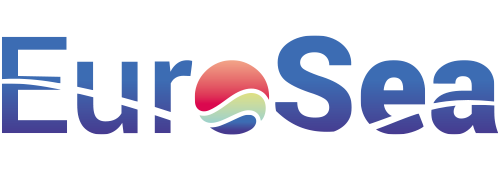
Description
The focus of WP2 is the synthesis and simulation of a comprehensive array of both in situ (like CTD, ADCP, and gliders) and remote sensing (especially nadir altimetry and the cutting-edge wide-swath altimetry from SWOT) observations. This meticulous simulation is further used to construct fields (OSSEs) that include crucial metrics such as dynamic height and geostrophic currents at the ocean surface. An integration of simulated drifters with nadir altimetry observations serves the dual purpose of refining the quality of the gridded altimetric product and advancing our understanding of surface ocean dynamics.
Impact During the Project
This effort can drastically refine the way we plan multi-platform observations. By simulating these observations beforehand, researchers and practitioners can better design observational campaigns to optimize the utility of different observing platforms. This predictive approach can result in more efficient allocation of resources, maximize data quality, and minimize redundant observations.
Measures: Efficiency Gain in Observational Campaigns: Reduction in the overlap of observational platforms or increased coverage in previously under-observed regions.
Quality of OSSEs: A qualitative assessment by experts on the fidelity and accuracy of the OSSEs in representing real-world oceanic phenomena.
Files Shared: The number of files shared on platforms such as Zenodo can be an indication of the interest and utility of the simulated observations and derived fields.
Impact Post Project
Following the successful completion of WP2, the marine and oceanographic communities witnessed an evolution in the approach to observational campaigns. By adopting a predictive, simulation-based methodology, the design and implementation of future marine observation initiatives became more precise, efficient, and holistic.
Enhanced Campaign Designs: The simulation of observations before actual fieldwork meant that observational campaigns could be planned with precision, ensuring every deployed instrument serves a specific purpose, resulting in better data collection.
Resource Savings: The more tailored campaigns, informed by simulated observations, led to substantial cost savings as redundant observations were minimized, and resources were utilized more efficiently.
Broadened Understanding of Ocean Dynamics: Integrating cutting-edge remote sensing technologies like wide-swath altimetry from SWOT within situ observations gave a broader and more detailed view of ocean dynamics, leading to breakthroughs in understanding and interpretation of oceanic phenomena.
Advancement over and above State of the Art
Predictive Simulation: Instead of a solely reactive observational approach, WP2 emphasizes a predictive methodology. By simulating observations, one can predict potential challenges or gaps before an actual observational campaign.
Integration of Cutting-Edge Technology: Incorporation of data from wide-swath altimetry from SWOT, a relatively recent advancement, pushes the envelope in terms of the comprehensiveness of the simulated datasets.
Holistic Approach: By integrating in situ and remote sensing observations, WP2 ensures a holistic view of oceanic dynamics, which was often segmented in previous methodologies.
Optimization of Altimetric Products: The specific effort to refine gridded altimetric products using simulated drifters and nadir altimetry is an innovative approach to enhance the quality and accuracy of widely-used oceanic datasets.
Resource Efficiency: By improving the design of observational campaigns, one can expect better data yield for the same (or even reduced) resource investment.
In summary, WP2’s emphasis on predictive simulation, integration of advanced technology, and a holistic approach to oceanic observation represents a transformative step forward, aiming to redefine how multi-platform observational campaigns are designed and executed.
Links and References
Link to D2.3 – OSSE Analysis: https://eurosea.eu/download/eurosea_d2-3_analysis_of_the_osses_revised_resubmitted/?wpdmdl=5516&refresh=650197c4f00b31694603204
